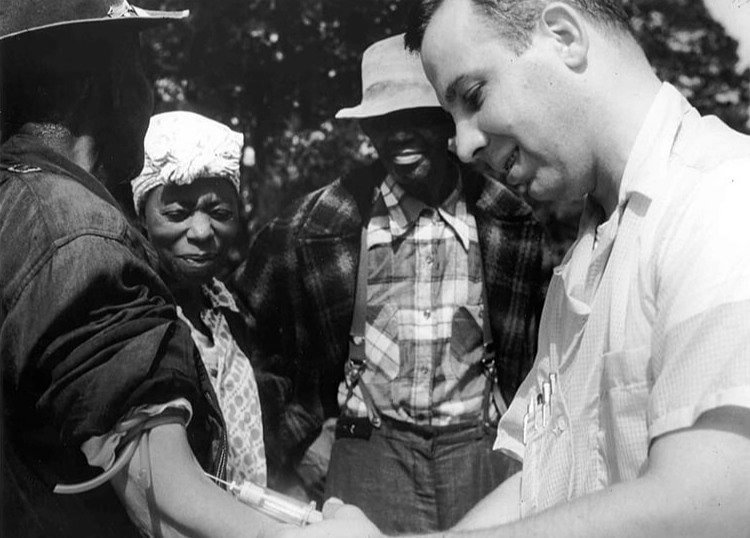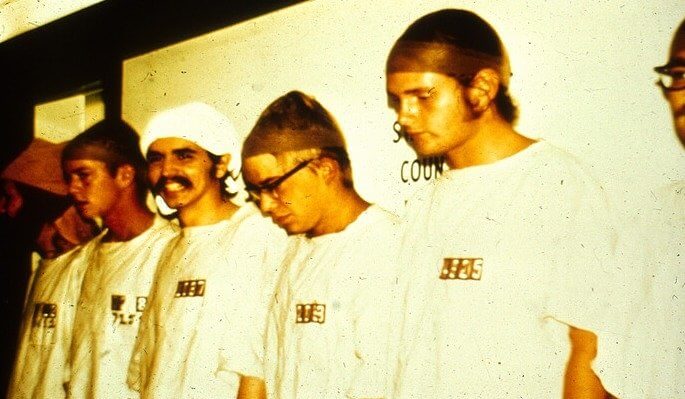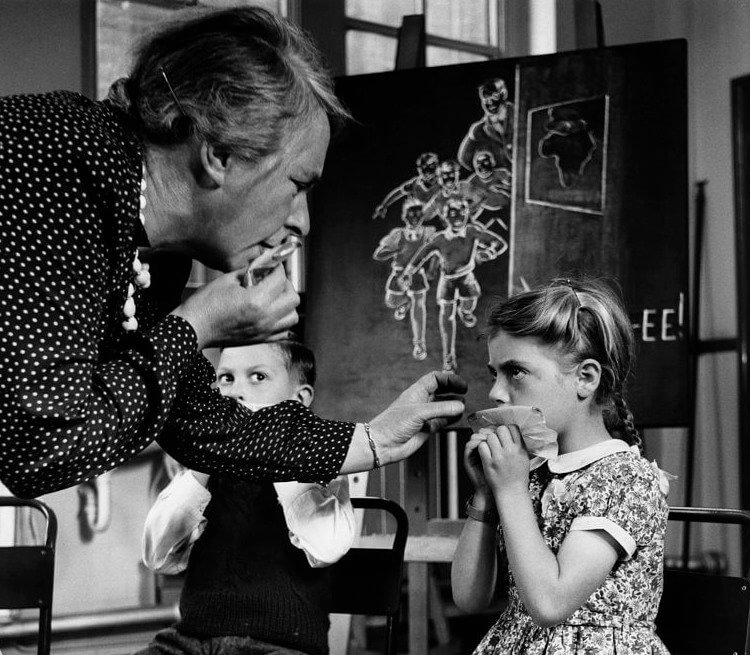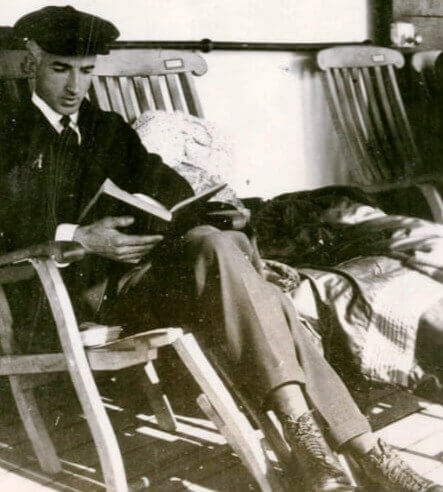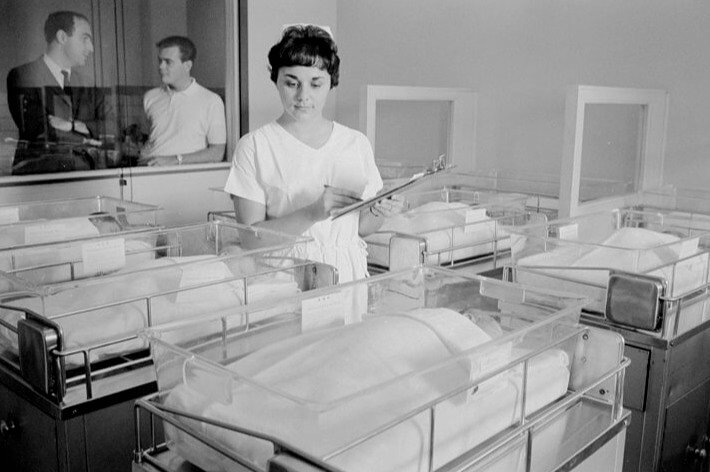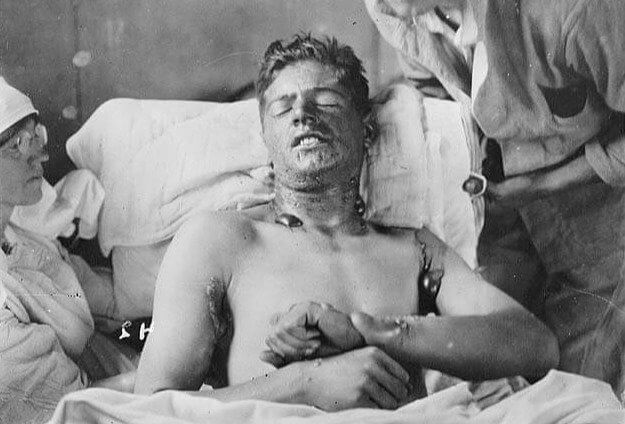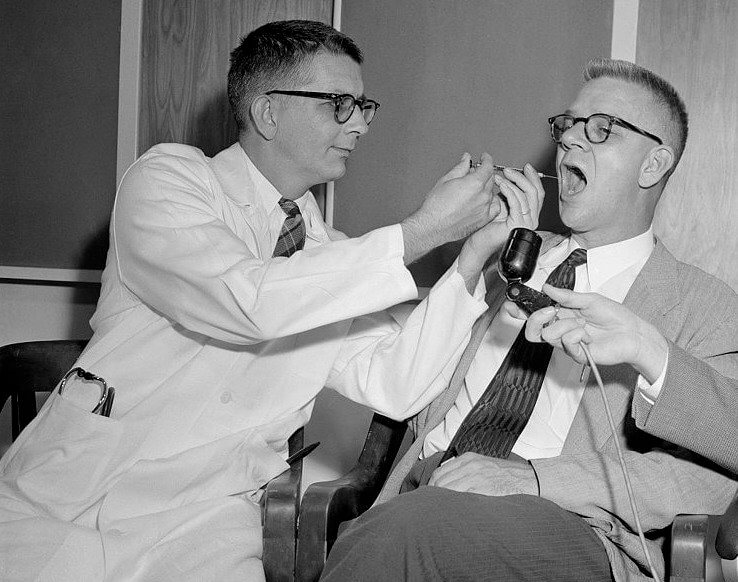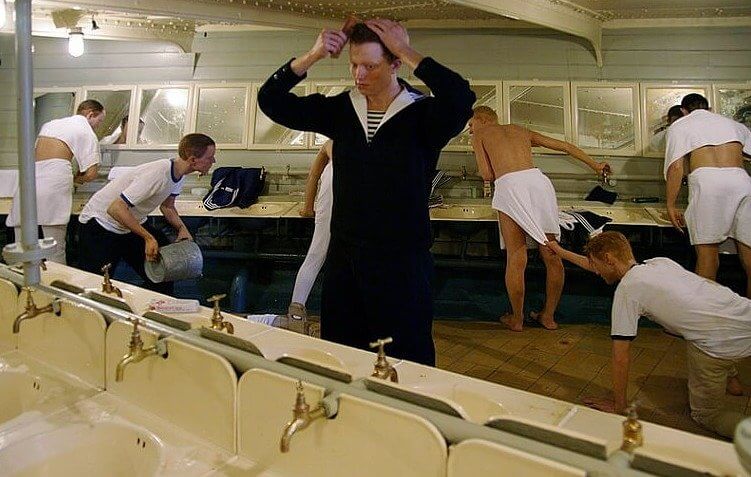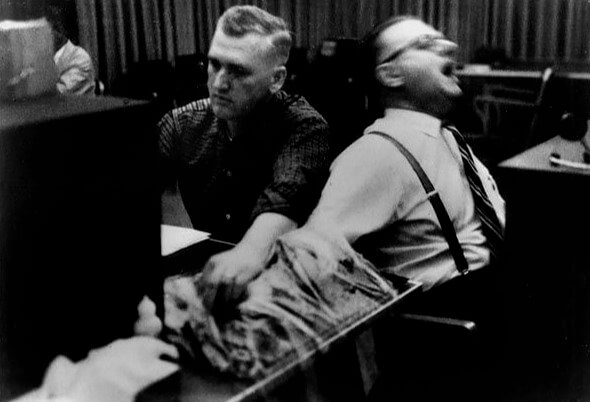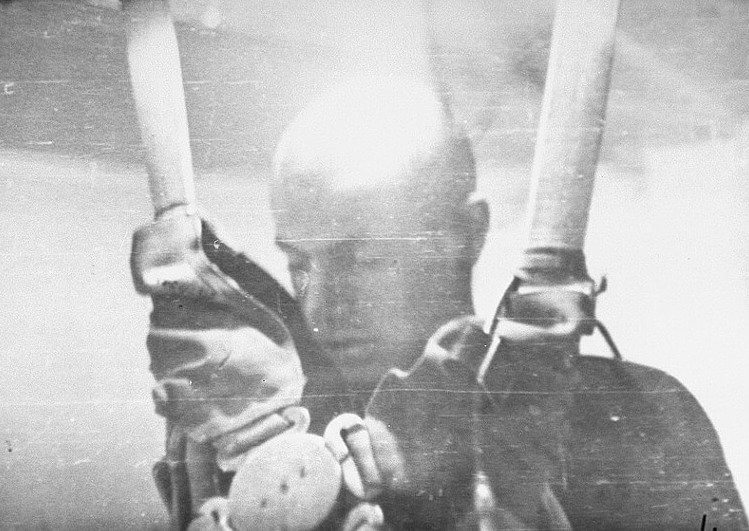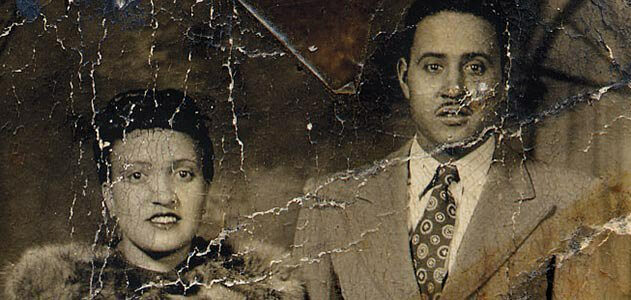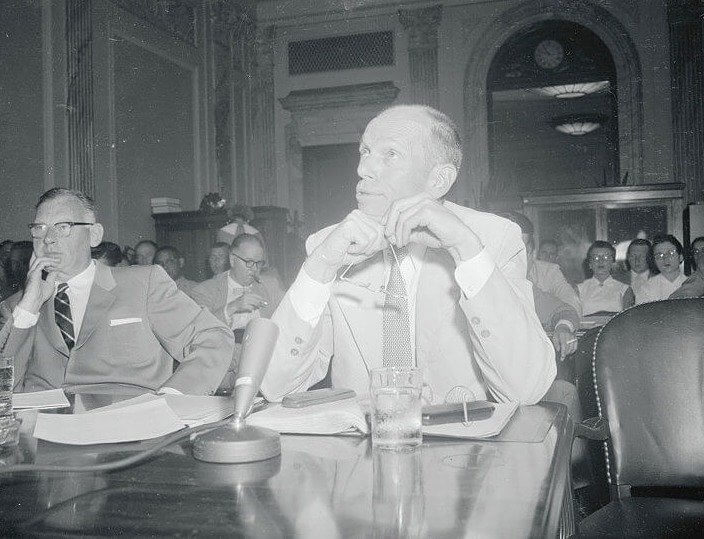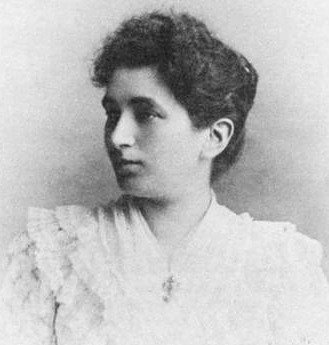These Pregnant Women Didn't Know They Were Ingesting Radioactive Iron
During the 1940s, the University of Vanderbilt began an experiment that gave more than 800 pregnant women radioactive iron. The researchers were trying to determine how long radioisotopes would take to transfer to the placenta. The women, most of whom were from a low-income background, were never told they were ingesting radioactive material. Many of the women experienced side effects attributed to radiation poisonings, such as hair loss and cancer.
Researchers picked the study back up in the 1960s, turning their attention to the children who'd been born, and they found out that at least seven of the children had died because of the experiment.
They Purposely Infected 399 Citizens With a Disease and Denied Them Treatment
Perhaps one of the most infamous and longest human experiments in U.S. history, the Tuskegee Syphilis Study wasn't exposed until the Washington Star reported on it in 1972, 40 years after it started. With the help of the Tuskegee Institute, researchers from the U.S. government wanted to study the effects of syphilis on Black men. They infected 399 sharecroppers in Macon County, Alabama, with the disease without telling them what it was. At the time, they told them that they had "bad blood."
Researchers initially treated patients, but after not finding "useful" data, they stopped and began monitoring. The patients were refused treatment and penicillin until the experiment was exposed, even though federal legislation mandated the treatment of STDs. Because they were never told what they had, many participants infected others, including their wives, and around 128 patients died.
Prisoners Were Blasted With Radiation Equivalent to 2,400 Chest X-Rays
It should be no surprise that some of the shadiest experiments often involve prison inmates. That was the case in an investigation conducted by the University of Washington from 1963 to 1973 on prisoners in Washington and Oregon. Researchers wanted to know how radiation affected men's private parts and convinced prisoners to sign up by offering them cash and making insinuations of parole. However, the prisoners were never told just how dangerous the experiment would be.
Researchers sent radiation, equivalent to 2,400 chest x-rays, through the prisoners' bodies for 10 seconds. Survivors settled with the university for $2.4 million in 2000. It should also be mentioned that the university conducted the experiment on behalf of the U.S. government, which wanted to know how radiation might affect astronauts.
University Of Iowa's "Monster Study" Left Kids Traumatized for Life
Aptly named the "Monster Study," two researchers from the University of Iowa conducted an experiment to study stuttering in children in 1939. The researchers, Wendell Johnson and Mary Tudor took children and separated them into two groups. In one of the groups, the researchers practiced positive reinforcement by giving the children compliments for speaking correctly. However, the other group of children received harsh criticism whenever they mispronounced a word.
The children who were constantly criticized developed permanent stuttering and lived the rest of their lives with the trauma. The two researchers kept their findings secret after hearing of the human experiments the Nazis conducted at the time.
"Mosquito Bombs" Filled With Diseases Were Intentionally Dropped in Florida and Georgia
In the mid-1950s, the U.S. Army conducted multiple experiments to see whether mosquitos and fleas could be used as weapon systems to carry biological agents. During operations Big Buzz, Drop Kick, and Big Itch, the military dropped bombs that contained millions of mosquitos infected with diseases like yellow fever and dengue fever on Savannah, Georgia, and Avon Park, Florida. A number of people were infected and suffered from respiratory problems, stillbirths, and typhoid, among other complications.
Multiple also passed away due to the experiments, but exact figures are difficult to confirm.
A Doctor Manipulated Parents Into Changing Their Newborn's Gender
Believe it or not, a man named John Money managed to convince two parents to reassign their baby son's gender in 1965. John was a strong proponent that gender is learned and advised the parents to do the gender reassignment after their son's circumcision went wrong. Because of the physical damage, Money argued that their son would be better off in life if he grew up as a woman.
The boy, David Peter Reimer, maintained that he never identified as a woman during his later years and suffered from depression throughout his life, despite Money reporting that everything had been a success. Reimer passed away from depression at age 38.
This Prison Doctor Used Animal Glands in Human Transplant Procedures
Dr. Leo Stanley was a medical officer at San Quentin prison in California from 1913 to 1951. During that time, he performed thousands of highly unethical experiments on the prisoners under his care. He subjected some to sterilizations and unnecessary body transplants, the latter of which he used body parts from animals and inmates who had kicked the bucket. It's estimated that he performed around 10,000 of these gland transplants.
In a book he released later in life, he admitted to sterilizing one prisoner who'd been put there for forging a $5 check.
The University Of California Secretly Experimented On Newborns
While some pretty awful experiments are on this list, a University of California study involving newborns has to be among the worst. The experiments, done in the 1960s, aimed to study blood pressure in newborns. Researchers did this by dipping babies' feet into ice-cold water, laying them down on a board, and then tilting them, so their blood flowed to their heads. These methods were used to measure aortic pressure and blood pressure, respectively.
More than 100 babies, no more than three days old, participated in the experiments. In one of the more horrific experiments, researchers inserted a catheter through babies' umbilical arteries.
Subjects Were Unwillingly Used in Mind Control Studies During the Cold War
It might sound like something out of a movie, but the CIA truly conducted several experiments to see if it was possible to control someone's mind or actions. One such program was codenamed Operation Midnight Climax, established in the 1950s. The CIA lured test subjects to their safehouse using seductive women. Unconsenting subjects were then given drugs like LSD while officers observed from a one-way mirror. The experiments also aimed to measure the effectiveness of blackmail.

When the CIA inspector general learned about the program around 1963, it was shut down. But later, congressional hearings failed to lead to prosecutions.
The Navy Tricked Its Own Troops Into Being Test Subjects
With memories of chemical warfare during WWI still fresh on many's minds, the U.S. Navy set out to test experimental protective gear against mustard gas in 1943. The tests were carried out on their own troops, who volunteered without knowing the full extent of the danger. The volunteers, mostly young men fresh out of boot camp, only learned that the experiments involved mustard gas after arriving at the Naval Research Laboratory in Washington.
Many who raised concerns were either ignored or threatened with court-martial. The U.S. government officially acknowledged the experiments in 1992. It should be noted that this was just one of many experiments conducted involving mustard gas during WWII. Others singled out soldiers from minorities for testing, and many documents have still not been released.
Civilians Infected by Nuclear Test 1,000 Times More Powerful Than the Hiroshima Bomb
It's no secret the U.S. conducted several nuclear experiments on and around Pacific islands during the Cold War. However, the largest nuclear device the country set off, codenamed Castle Bravo, ended up contaminating parts of the Marshall Islands and seriously exposing residents to radiation. Most researchers agree that this was an accident and the scientists made a colossal mistake in predicting the bomb's yield. However, that was little comfort to the residents, many of whom (understandably) believed the whole thing was planned.
Afterward, the U.S. launched a secret program in 1954 to study the effects of radiation on Marshall Islanders who'd been exposed, around 239 in total. The bomb ended up being around three times as powerful as estimated and 1,000 times as powerful as the bomb dropped on Hiroshima.
Dr. Lauretta Bender: The Children's Doctor of Horrors
Dr. Lauretta Bender worked at Creedmoor Hospital in New York when she began her electroshock therapy experiment on children. Dr. Bender had been labeled "mentally defective" by her teachers when she was younger, which probably influenced her decision to study children as an adult. However, she never expressed sympathy for the children she performed electroshock therapy on at Creedmoor to study childhood schizophrenia, a term primarily used to describe what we know today as autism.

She believed that children who moved while receiving shocks exhibited signs of schizophrenia. It's estimated around 100 children were subjected to the tests. She also gave numerous children LSD and powerful tranquilizers.
The Soviet Union's Poison Experiments Still Affect Us Today
The Soviet Union invested heavily in experimenting with poisons throughout much of the 20th century. Known as laboratories 1, 12, and Kamera, researchers would bring prisoners from the gulags and force them to take various medications or meals containing different poisons. Ultimately, the Soviet Union wanted to find the "perfect" poison or something that was nearly undetectable. Among the many different things they tested were mustard gas, ricin, and digitoxin.

Both men and women were experimented on, and the results of those tests can be seen even today, with various poisonings in recent years attributed to Russian intelligence agents.
A New York Institution Experimented on Mentally Ill Children
When Willowbrook State School invited Dr. Saul Krugman, they hadn't planned on running experiments on their patients. However, they were suffering from an outbreak of hepatitis, and things quickly got even further out of hand. Dr. Krugman had been invited to investigate the outbreak, but he instead offered to find a cure by experimenting on the children housed there. The school, located in New York, was an institution for children with mental illnesses.
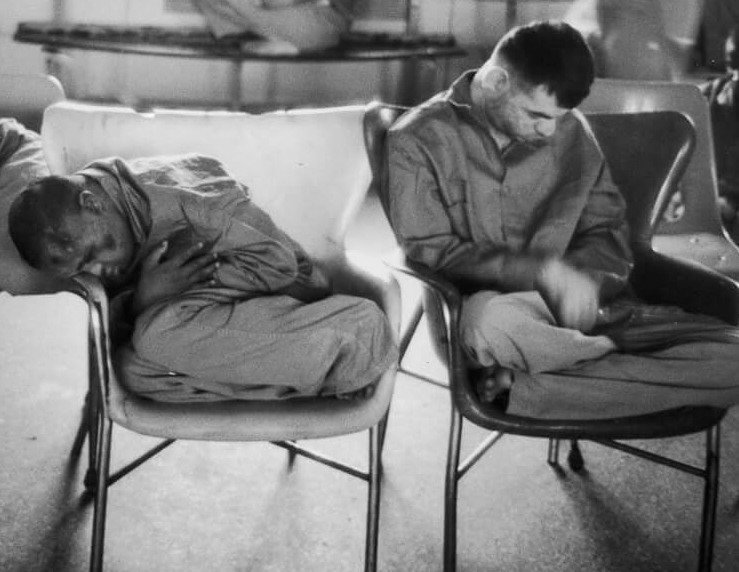
Perhaps the worst part is that the staff initially resisted the idea but relented after parents signed forms giving Dr. Krugman permission to conduct the experiment.
The CIA Secretly Drugged Countless Citizens
Possibly one of the CIA's most extensive human experimentation programs and one that spawned multiple sub-programs, MKULTRA began in 1953. The project involved both U.S. and Canadian citizens, who were often given drugs like LSD without their knowledge, to study how to manipulate and control people using different mental techniques. There were also incidents of abuse and just all-around torture. The program was halted in 1973, and a congressional investigation was launched.
However, no criminal charges were ever brought due to the lack of official documents that survived. Many agents also claimed they couldn't remember the events and programs' details.
A Stanford University Study Purposely Conditioned Children Towards Violence
Although it might seem like common knowledge today, in the 1960s, psychologist Albert Bandura wanted to prove that children could learn violent behavior. He collected 72 young children and put a group of them in a room while an adult physically and verbally hurt a blow-up doll. The adult then left the room, and researchers watched the children to see what they'd do next. Unsurprisingly, the children began to hurt the doll just as the adult had.

The intensity to which they hurt the doll reportedly alarmed some researchers. A subsequent test a couple of years later resulted in the same outcome.
A Professor Lost Control of Subjects in a Fake-Prison Experiment
Philip G. Zimbardo's notorious Stanford Prison Experiment took place in 1971 on the university campus. The study brought together 24 male students and separated them into two groups — prisoners and guards. The guards were given mirrored glasses, and the prisoners were subjected to mistreatment to simulate life inside a prison. However, things escalated so quickly that Zimbardo ended the experiment after only six days.

Zimbardo was later criticized for acting as a tyrant, and he admitted that sometimes he'd felt more like a superintendent than a researcher during the experiment.
A School Lesson In Fascism Is Eerily Successful
Ron Jones was a teacher at Cubberley High School in 1967 when he decided to conduct an experiment. He could not clearly convey to his students how the Holocaust was allowed to happen, so he decided to show them. He started acting like a dictator inside his classroom, encouraging loyalty to him and only him and creating an atmosphere of suspicion. The movement quickly spread throughout the school. Students even began saluting and wearing symbols in a similar fashion to the Nazis.
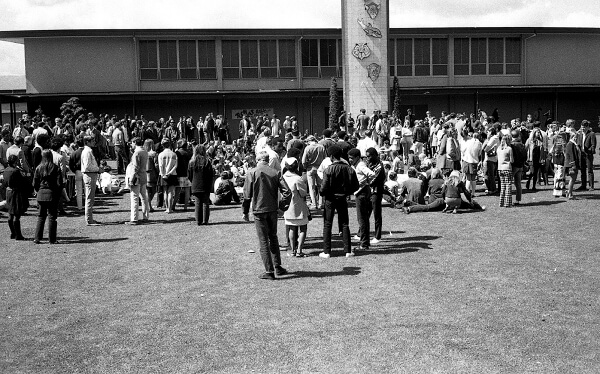
Rightfully worried that the experiment was getting out of hand, Jones ended it. The most alarming aspect of the "The Third Wave" movement, as it was called, was that it only took four days for things to seriously look like they might be getting out of hand.
The "Little Albert" Experiment Gave This Baby a Life-Long Phobia
The Little Albert experiment is a now well-known experiment about human conditioning that took place in 1920. John B. Watson, a psychologist at Johns Hopkins University, took an 8-month-old baby and subjected him to numerous tests. The child was introduced to a rat and then would be startled using loud sounds. These sounds grew louder and more startling until the baby learned to fear the rat and cry every time he saw it, whether there were noises or not.

Although the doctor proved that a human could be conditioned, Albert developed a phobia for anything with white fur. Albert died in 2007, and, thankfully, his family said that he lived a happy life.
Psychology Student Spied on Gay Men in Public Restrooms
Laud Humphreys's "tearoom" study dispelled a number of stereotypes about homosexuality when it was released. Humphreys decided to write his doctorate dissertation about "tearoom sex" (intimacy in public restrooms) after growing curious about why so many arrests occurred involving this activity. He acted as a lookout at one of the tearooms and later interviewed many of the men who used them. He found that around 54% of the men were married, and another 38% were neither bisexual nor homosexual.
However, some have criticized him for not telling participants they were part of a study while he acted as a lookout.
UCLA Took Patients With Schizophrenia off Their Medication Without Consent
In an effort to study schizophrenia and if there was any way to predict psychosis, UCLA and two professors began an experiment in 1983. They took a group of patients who lived with schizophrenia off of their medicine to study and record how they reacted. A court later determined that the university failed to get proper consent from patients to take them off their medications. The experiments continued until after 1994 - and with grave consequences.
One former patient ended up passing away during a relapse in 1991, a couple of days after leaving the study. The experiment has been widely criticized for not having an adequate plan in case of relapses, among many other criticisms.
"All I Saw Before Me Were Acres of Skin"
In what's probably one of the creepiest lines ever spoken by a medical professional, Dr. Albert M. Kligman once told a reporter, "All I saw before me were acres of skin. It was like a farmer seeing a field for the first time." He was talking about the inmates at the Holmesburg Prison in Philidelphia in 1951. That's where Dr. Kligman spent 20 years conducting experiments on humans involving things like foot powders, shampoo, deodorants, and eye drops. Not surprisingly, Dr. Kligman went on to invent Retin-A, a skin cream.

Subjects had to undergo painful biopsies and other techniques to monitor how they reacted to the experiments.
Unethical Study Sought To Understand Nazi Germany and the Power of Authority
After the Nuremberg and subsequent trials of Nazi collaborators, many were left wondering how an entire country could be coerced into going along with the atrocities committed during the war. In 1961, Stanley Milgram set out to find out if it was genuinely possible that people were just "following orders," as many claimed. While at Yale, he devised his experiment. Two people were put into two separate rooms, with only a thin wall separating them. The person in one of the rooms would read the other a set of questions and then be told to administer a shock every time they answered the question wrong.
Although many people said they wished to stop giving the shocks, they continued after being urged by the experiment supervisor with just a few simple, non-threatening words. A significant amount of the participants administered life-threatening shocks. Unbeknownst to them, the person in the other room was just an actor.
Nazi Germany's Mass Human Experiments
The Nazis conducted some of the most well-known experiments during WWII, often committing heinous acts against Jews, Romani, and POWs from concentration and prisoner camps. The experiments made headlines during the Nuremberg Trials and even led to the introduction of the Nuremberg Code, a set of medical research ethics. Experiments included mass sterilizations, amputations, genetic manipulation of twins, and nerve transplants. Nazi doctors were also given broad discretion to conduct their experiments, meaning they could do almost anything.
Countless people died during the experiments, as reflected in the prosecution's opening statement during the trial: "A handful only are still alive; a few of the survivors will appear in this courtroom."
The U. S. Infected Prisoners With Malaria For 29 Years
Like other military campaigns throughout history, the U.S. found itself suffering losses due to diseases like malaria when it entered the Pacific theater during WWII. The Malaria Research Project was quickly ordered to try and find a cure for the disease. With their consent, researchers from the University of Chicago infected a whopping 441 prisoners at the Stateville Penitentiary in Illinois, and the study lasted for an astonishing 29 years.

It eventually led to the development of Primaquine, which is used to treat malaria today. However, it has been criticized for using human subjects, particularly prisoners.
Jane Elliott Used Third Graders to Teach a Scary Lesson on Racism
After Martin Luther King Jr. was assassinated in 1968, Jane Elliot decided to prove a point using her third-grade class. She wanted to demonstrate that racism affects learning and education. She moved all her students with blue eyes to the front of the class and those with brown eyes to the back. Then, she gave the blue-eyed children perks, like extra recess time and more attention, while chastising the brown-eyed children for things the others got away with.

She found that the blue-eyed children performed better, even if they'd previously been performing worse than some brown-eyed children. She reversed the positions and found the same results. The children reportedly cried and hugged each other when the experiment ended.
She Contributed to Some of Science's Biggest Breakthroughs and Nobody Told Her
Henrietta Lacks's contributions to science and medicine are probably some of the most important of the 20th century. Despite this, she and her family hadn't received recognition until recently. Lacks, who was Black and from a low-income background, was diagnosed with cervical cancer at John Hopkins University in 1955. The doctor collected her cells and sent them off to a lab for testing, where they were successfully kept alive and even multiplied, which doctors had been trying to do for years but weren't successful until that point.
Called HeLa cells, they have been used in everything from developing the polio vaccine to gene mapping to cancer and AIDS research, and they are still used to this day. However, it'd be decades before anyone told her family about her contribution or the public became aware.
Imperial Japan's Unit 731 And It's Human Experiments
Some of the most horrific experiments in history came from a little-known Japanese unit during WWII called Unit 731. The crew conducted its experiments on civilians and captured POWs, mainly from China, Russia, and Korea. They also released rats that'd been infected with diseases on Chinese civilians and towns. However, some of their most vile acts involved conducting amputations and other body part removals on live subjects without anesthesia.
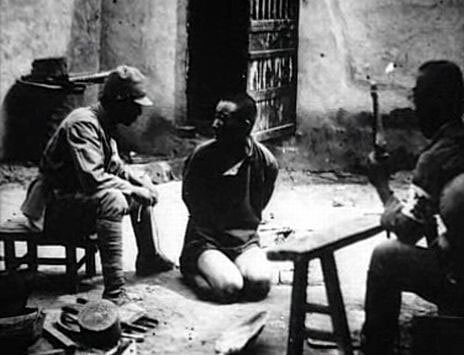
After Japan surrendered, the U.S. pardoned members of the unit in exchange for knowledge about their work. Japan only officially acknowledged the unit's existence in the 1990s, and a list of members was released in 2018.
This Study Infected 1,300 Unknowing Guatemalans With Syphilis
Only brought to light in 2010, the syphilis experiments on unknowing Guatemalans in the early 20th century are some of the most disturbing. The U.S. worked with the former Guatemalan president and some health officials from 1946 to 1948 and infected around 1,300 people without them knowing. They then tracked the progression of the infection without giving them proper treatment. It's still unclear what the exact purpose of the experiments was, as official documents mention a number of different aims.
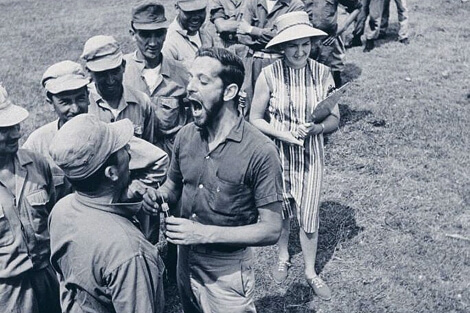
The U.S. formally apologized for the incident after it was discovered, and a presidential commission found that the head of the study Dr. John C. Cutler, and others involved knew at the time that the experiments were highly unethical.
This Doctor Subjected Gay Men to Aversion Experiments
Dr. Aubrey Levin worked as the chief of psychiatry for the South African military during Apartheid. So, it shouldn't be surprising that Dr. Levin performed electroconvulsive aversion therapy on thousands of homosexual men starting in 1969. He aimed to "cure" homosexuality by submitting them to severe shocks after telling them to fantasize about men. He later fled to Canada, where he continued to live and teach at a hospital until a bizarre incident in 2014.

That year, he began serving a sentence for assaulting male patients. He was granted parole 18 months later, though he was forced to stay at a halfway house after being released from prison.
North Korea's Secret Experiments on Children With Disabilities
Although these are hard to verify because of North Korea's isolation, several defectors have reported seeing the government conduct experiments on human subjects. Some of these might be related to chemical warfare, such as one report that detailed a group of women being given poisoned cabbage and then passing away 20 minutes later. However, others seem to have no aim, such as claims that test subjects are beaten, used as target practice, and families ended in gas chambers. It's thought that a van collects around 50 workers from camps monthly for these "tests."

A former North Korean special forces member told DW News in 2014 that he defected after seeing the regime conduct chemical weapons training and experiments on disabled children. He also said that the country rounds up children born with disabilities with promises that they will be taken care of.
William Beaumont's Open Stomach Experiment
A fur trader who was accidentally shot in the stomach in 1822 probably thought he was destined for the grave shortly after the accident. Indeed, when Dr. William Beaumont began treating him, it was suspected that he wouldn't make it through the ordeal. However, he ended up making a recovery with a hole in his stomach to show for it. After seeing this, Dr. Beaumont thought it'd be a perfect opportunity to study the human digestive system.
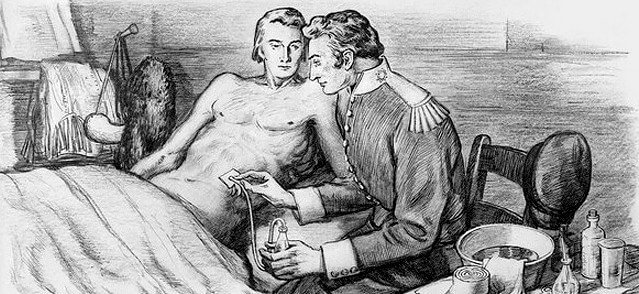
He would insert food through the man's hole in his stomach and pull it back shortly later using string. The experiment helped prove that digestion is a chemical process, but some argue that the doctor might've been able to close the wound surgically and chose not to for the sake of his investigations.
An American Doctor's Appetite For Human Experimentation Comes To Light
Amid a furor of interest in mind control and substances, the CIA began to initiate Project QKHILLTOP in 1954. They tapped Dr. Harold Wolff of Cornell University Medical School to lead the project, which aimed to study possible Chinese brainwashing techniques for use in their own programs and interrogations. Dr. Wolff was one of the country's premier experts on human ecology at the time, but that didn't stop him from being more than willing to conduct tests on human subjects.
"Where any of the studies involve potential harm to the subject, we expect the Agency to make available suitable subjects..." he wrote in a letter.
Sigmund Freud Conducted Highly Unethical Experiments On This Patient
Sigmund Freud is known today for his many contributions to psychology. However, he isn't without controversy. A 27-year-old Emma Eckstein sought Freud's help for symptoms like "slight depression" but ended up being treated for something entirely different. Freud treated her for hysteria and excessive touching of herself, which were considered ailments during the time. He did this by cauterizing the inside of her nose, which ended badly for Eckstein.
He continued to "treat" her for a couple of years, but researchers have begun to wonder whether Freud was simply conducting experiments for his own motives.
Project Artichoke Stokes The CIA's Interest In Manipulation
Among the CIA's many human experiments in the 1950s, Project Artichoke sought to study mind control using substance use, withdrawal, hypnosis, and amnesia. Unlike some other experiments, Project Artichoke went a step further and asked, "Can we get control of an individual to the point where he will do our bidding against his will and even against fundamental laws of nature?" So what exactly resulted from this serious inquiry?
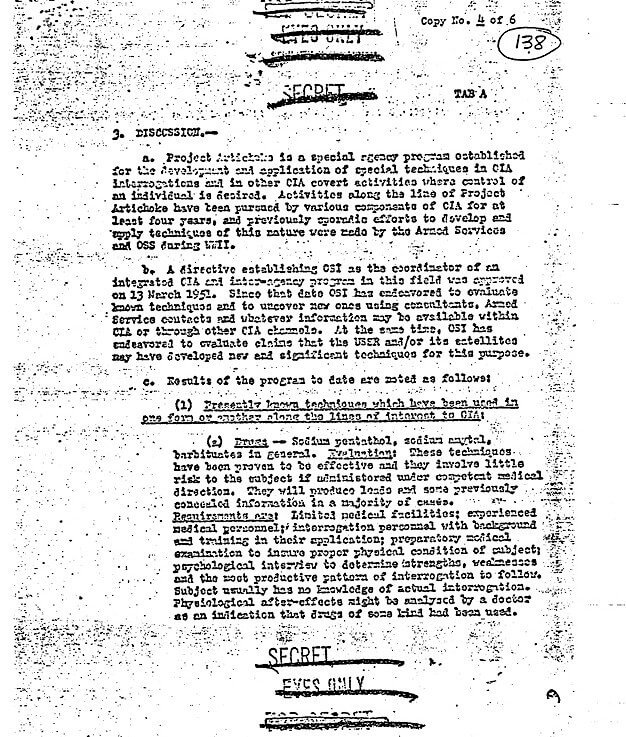
It was shut down with many other experiments in the 1960s, but not before it garnered more interest in using manipulation and mind control in fieldwork.

